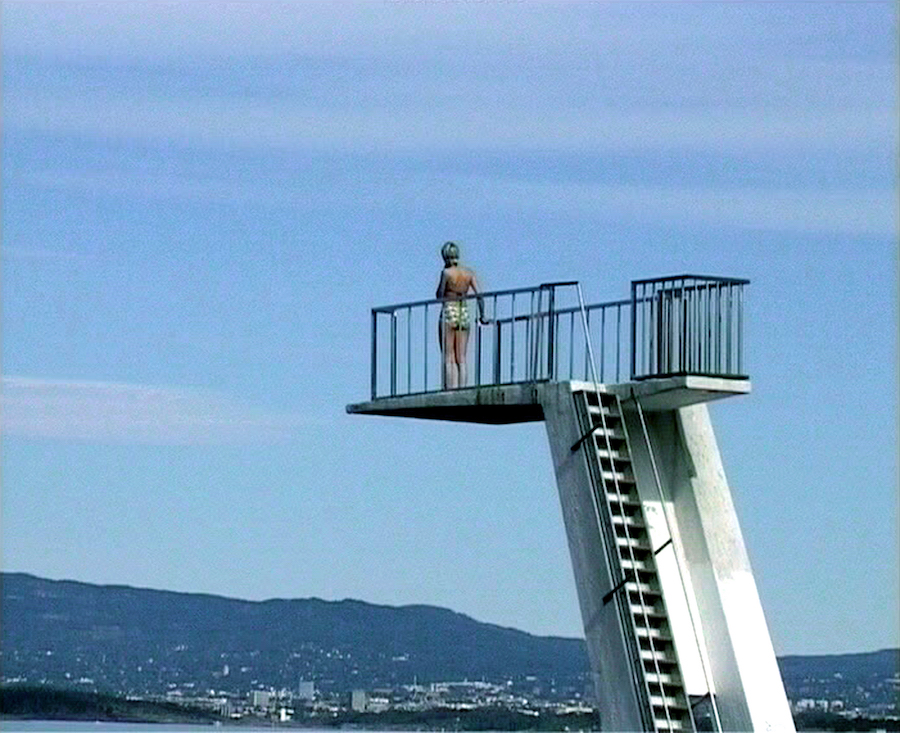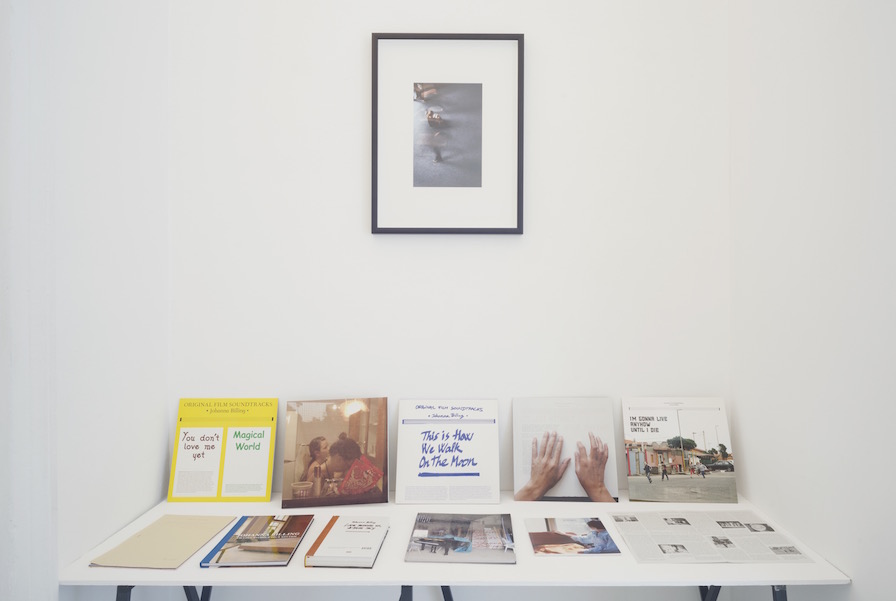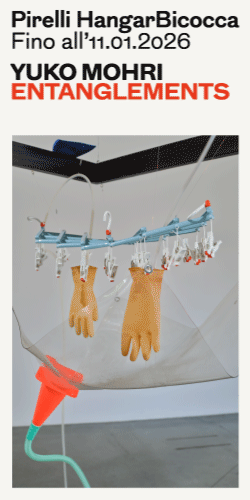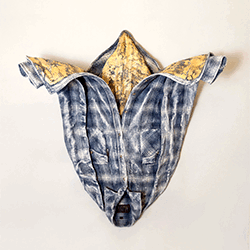[nemus_slider id=”55450″]
—
Take your time, please.
It’s time for Johanna Billing, with her first solo in Italy, from 11th of April to 12th of June. The title is Keeping Time: you can imagine listening to music clapping your hands or tapping with your fingers; or maybe you can try to catch the instant, and then maintain it. Anyway, as time is what it takes to do everything, this time it’s possible to enjoy four videos getting an overview on Billing’s career during last fifteen years. Conceived for Villa Croce Museum, the exhibition takes the spectator to a limbo where he wants to participate to what is happening in the movies. He can get involved into an unreal traffic jam in the middle of German countryside: in this fiction, whose title is Pulheim Jam Session, there is no anger on people’s faces, no hurry to get out of it. They really take their time, to act, to play and to talk, as Billing asks them to improvise life in that unusual condition of actors and directors of themselves. The video goes on while an improvised music by the Swedish musician Edda Magnason comes out from a barn situated in the empty Pulheim city where usually there are more cars than citizens.
In the second video there’s an easier reference to freedom and spontaneity, as it shows a group of children walking around some streets and parks in Rome and then entering a desert school: they naturally start exploring some random rooms of the building, playing with things they find. Every discovery they do reflects on the link between childish curiosity, as the symbol future generations, and the timeless changes of social and cultural behaviors supported by the efforts of famous Italian personalities as Munari and Pasolini.
Walking into the third room, the spectator deals with the improvisation referred to a choreography acted by some Romanian students in Iasi: in this video there’s a continuous interest by Johanna Billing in limit, as represented by the invisible border that separates real improvisation from everyday gestures and action. It’s slightly different from the children in Rome, as Romanian students act with knowledge, as their bodies perform even when they try to explore new gestures.
The last video of the exhibition shows a girl on a high trampoline: she wants to dive into the water, the she hesitates, then again she walks a bit along the edge, and she comes back. It’s a sunny day in Oslo, some guys are waiting for their turn to dive while others are observing the girl. It’s a matter of time, and there is no way to have a preview of what will be: well at the end she decides to..
Johanna Billing’s artworks indeed want to investigate on the specific cultural features of private and public dimensions of contemporary society, focusing on music and body language. The spectator walks on to the next room to see the third video, then to the fourth one, completing a circuit and restoring curiosity while time goes by: every video is projected in loop, so once again he wants to take a look at the first performance.
Take your time please.
It’s now time for her interview:
Giovanna Repetto: Title. “Keeping time” is your first Italian solo: would you tell us something about the title and your specific choice about these works?
Johanna Billing: When thinking with Ilaria Bonacossi (curator of the show) about possible works to put together, we started to talk a lot about the time aspect of many of the film projects I have done, not necessarily their length, but the time the projects are stretched out, from research process to event making and to post production. Although the films evolve around improvisations and situations which involve a lot of freedom, sometimes the projects tend also to involve a large group of people and they become quite big logistical projects that need careful negotiating and planning. In the very making, some projects could even seem to be about stopping time, freezing a moment. Taking up time and place. The English phrase ”keeping time” came to my mind because of its multiple meanings: to capture time as to record how long something has taken but then at the same time it has also the meaning of keeping a musical rhythm.
GR: Different places. Which are the main differences working with children in Rome, students in Romania and adults in northern Europe?
JB: To be honest I try to think rarely about differences between people, as perhaps I’m more concentrated in telling how different it could be to manage and organize a project in a context, because somehow some projects choose themselves and their place: the logistical craziness around a project like Pulheim Jam Session, the arranged car jam in which about 100 citizens from the rural village Pulheim in northern Germany, goes from permissions to block a road, to endless dialogues with farmers about the best month to make the project depending on crops and their needs concerning the fields, and again to the necessity of organizing outdoor toilets for the many elderly people who took part in the several hour long traffic jam.
Somehow this could not have been done in any other place; because of the high number of cars owned by local people in this area (2, 8 per household) or the time people spend during their lives in this semi-private space of a car. Somehow the place, more than the people themselves, tell about those differences. Of course I get many times the question about how special it must be to work with children in comparison to adults: well I think it is not necessarily so different, as the key is to have equal respect for children in front of a camera and to think equally about how they are in the end, shown as you would have done with adults. We are just not used to treat children this way in these situations, they very often get portrayed as cute or represent an image as ”children” etc.

GR: Improvisation. Does your artistic practice want to underline freedom of expression for other people (e.g. the “actors”) or is it an absence of constraints for you? Maybe both?
JB: In order to have an improvisation or freedom to take place, I think you need to plan it carefully. So, what looks as free or spontaneous, might have happened because it’s in a situation that actually has a lot of constraints. The films are always a result of an unreal, constructed situation. And somehow what people perform or do in these situations is sometimes more about playing out a reflection on the situation they are put in. Many times it is some kind of learning situation, you might be asked to do something, or learn something you would not normally do. So it becomes a kind of act or play, but in the end not necessarily something you have chosen. So in this case it might not be so much about freedom of expression, although there is freedom involved in how to do things.
GR: Spontaneity and direction. I see a great relevance of spontaneous body language for your works: how much do you actively intervene as curator-director while people act? But how do you keep them “safe” from your presence in order to correctly manage with realism, spontaneity and your instructions?
JB: I try to not interact or intervene too much in the very moment. I think what you see is a result of the fact that, while somebody is doing something, simultaneously I always try to capture what is happening around – as well as capturing what happened also before and after what you thought was the ”action”. In a film like I’m lost without your rhythm for example, it is never so easy to tell which is the choreographed movement and which is the everyday gesture: it is all there in the making, but of course later underlined and focused through editing and post production.
GR: Relationships. How do you interact with actors? And do you show them your work during/after filming?
JB: I seldom work with real actors: the people who take part in my films respond to invitations which are connected to their experience from a place or activity etc. When meeting people in these set-up situations that are invented with a lot of uncertainty about what will actually happen, it is important to invest time in creating a climate in which people feel they can contribute and in which they feel they are, as well, with the crew, part of shaping, organizing something that is experimental (not an experiment although!) and to underline that together we form the content somehow. It is again about time I think, when people give you their time you have to take time or use correctly their time. When all the cars drove up for the car line (in Pulheim Jam Session) I realised I needed first to go through over 60 cars and shake everybody’s hand with my rusty school German: this created a delay for the project of more than one hour, but there was nothing else to do! Just think to people, who normally sit in lines for all the week, come to a windy field to spend time in another traffic jam on their free saturday afternoon!
GR: Local audience. While shooting, how is the relationship with local audience? And what about generic audience attending to your movies?
JB: It is of course important to come back and to see a film together, with people involved or that acted: I try to do that as much as I can.
GR: Shooting locations. Do you fix shooting location’s borders or could it happen that improvisation expands them?
JB: This relates to the fact that I think improvisation needs borders. Like the children running around in all those different places around Rome (in I’m Gonna Live anyhow until I die). It might look as they just go from place to place, and we follow them with the camera. In fact, each centimetre of the street basically had to be planned and scripted as you can’t let a group of six years old kids run around in the traffic in Rome. However there are also other things about improvisation in a work: how you film goes back to this idea of ”where you think the action is happening”, where to direct the camera in the moment.

GR: Music. Another key to get in touch with your works: how do you choose it?
When working on a project, this happens in parallel to everything else, it is not that I make the film and then I choose a soundtrack. Sometimes the musical content slips in from the beginning and it shapes the content or theme; sometimes it is the content. When working on the film that was set in Rome which very much referred to a specific moment in time in the 70s, I heard Franco Battiato’s winding violin track Cariocinesi (from the same period) in my head and it made sense to work on that. I have been a music nerd for most of my life, as I worked earlier as well as music journalist and I had a record label, so I have in my head a living archive of music. But most of all, I have a view on music and perhaps especially popular music, that it is very seldom as trivial or simple as it many times tend to be portrayed as – a pop song is never just a pop song, when studying it closely and the world around its making, it tells a story about a time when it was made and it often reveals more layers or add social or political perspectives then you first think. So this is some kind of continuous work I do, while at the same time producing the music.
Sometimes music – or instruments – or how something is performed plays a part. In This is how we walk on the moon where we see a group of Scottish musicians learning how to sail, I was interested in working with the quality of string instruments together with the noise the sound makes on a boat- string, rope, shrouds in the wind. In the film about choreography, in Iasi, Romania, I’m lost without your rhythm, we used only percussion-based instruments, marimba, drums, percussions as well as the tapping of the typewriter and back of chairs with the fingers and hands. In the film with the car line, the grand piano, with its physical size and shape as a shiny black car – with the open lid as motor bonnet – it played a role as some kind of vehicle itself, in the end we see it to being driven away.
GR: Loop. Your movies could be half-documentation and half-fiction, later proposed in loop: can you tell us about this editing choice?
JB: I’m interested in the possibility art has to stop time and space: also museums or churches have the capacity of allowing this to happen. I love films, but I might not love the cinema place as much: probably it is great to have a collective experience watching things with other people, but cinemas keep us locked in our expectations, given frames and durations. For me, when I make a film I do not know when filming, or if the film will be 3 min long, or 30 min or 3 hours. The material itself will tell me. To work with a loop is also a way or a possibility for me to keep a situation in the present, to keep freezing time, or being in that situation, similar or referring back to a context when the work was made, and not so much about telling a story or fulfilling expectations.
GR: Inspirations. Are there any important movies or inspiring directors for your career/works? If so, how did your practice get inspired or influenced?
JB: I have not a movie background. I am trained as a sculptor, later on in school I started to arrange situations with people for photographs, but soon I realised I needed to start using the videocamera instead, to document it and not only for the moving image. And also because I realised I needed to include sound. Sound is one of the most powerful mediums when it comes to portraying atmosphere and emotions. Similar to the choice of which images to capture while filming, I have always been interested also in the sounds around small things you might not pay attention to. All these things come from the videocamera that in the 90s was still about sound+image physically on the tape. For me it was not about becoming a film maker: it became a capturing tool, but somehow I could still be a sculptor, that I think I am still.
GR: Any previews on future works?
JB: Too early in a process to tell about it. Sorry.











